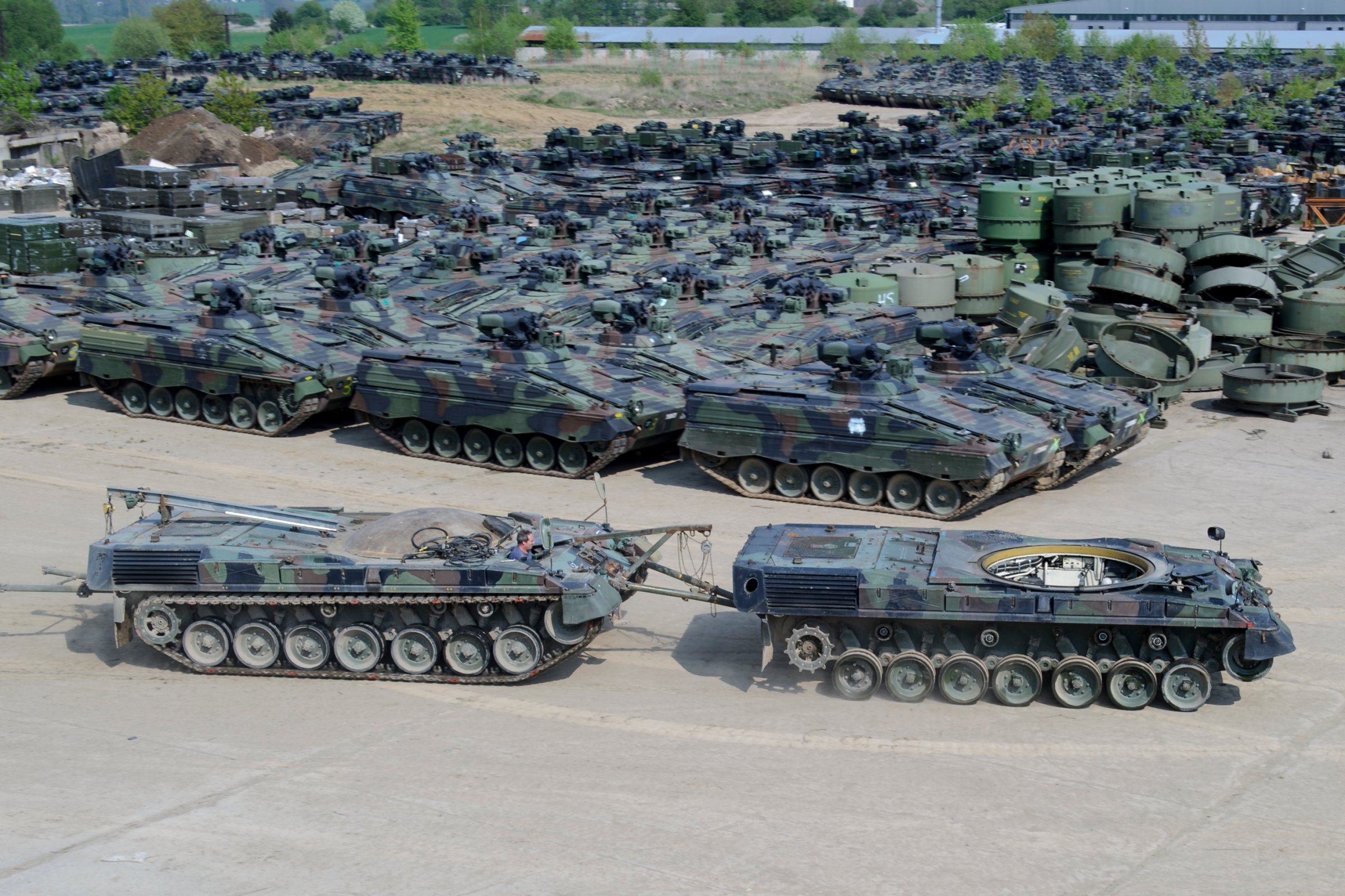
Sixty-five years ago, U.S. President Dwight D. Eisenhower lamented the hidden human costs of the Cold War arms race: “Every gun that is made, every warship launched, every rocket fired signifies, in the final sense, a theft from those who hunger and are not fed, those who are cold and are not clothed.”
In a moment as perilous as ours, President Eisenhower recognized that unrestrained military spending creates distrust, worsens tensions and makes peaceful resolutions to conflict harder to achieve. Perhaps he was helped in this knowledge by his experience in two world wars that killed millions, upended life everywhere and—by imparting on the world a universal and intimate understanding of sorrow—helped birth the United Nations.
But today, the logic of militarism too often goes unquestioned. As global tensions rise and conflict engulfs countries such as Syria, Mali, South Sudan and Yemen, military cuts are a proposition that, in much of the world, sounds idealistic and even naïve.
This kind of thinking is short-sighted. In debates over defense and security, perhaps we should ask whether the enormous sums spent on our militaries actually make us safer. To defend ourselves in the true sense, we should shore up our game plan against poverty and do more to promote education, ensure healthcare coverage and protect the environment—all bulwarks of security more potent than weaponry.
World military spending has more than doubled in inflation-adjusted dollars since the end of the Cold War, and international transfers of major weapons have steadily climbed since the early 2000s, according to the Stockholm International Peace Research Institute.
For policymakers, analysts and taxpayers of every country, it is reasonable to ask exactly what “security” they are buying as their arsenals expand. Are they safer from war than if their governments committed to finding agreements that would rein in excessive military spending?
In our own lives, do the hundreds of billions of dollars spent each year to develop and stockpile weapons make us and our families safer from street violence or unexpected illness? Do they provide reassurance that we will have food and comfort one month, one year or one decade from now?
It is an irony of our world that we continue to amass deadly arsenals ostensibly to protect life when the combined power of these weapons threatens us both directly and by sapping resources to tackle other dangers.
Curbing this deadly upward spiral will require decisive steps against the serious threats that guns and bombs cannot tackle. Excessive spending on military hardware cannot address challenges such as climate change, mass refugee flows and extreme poverty. In the absence of an urgent global response, these challenges will fuel tomorrow’s conflicts and make each of us less safe.
Now is the time to consider alternatives to excessive militarization, options that can provide true peace and security.
In 2015, every government in the world signed onto a comprehensive roadmap to build a more peaceful planet. The 2030 Agenda for Sustainable Development sets out a detailed blueprint for ending poverty and hunger, protecting the planet, fostering peace and guaranteeing every person a chance at a prosperous and fulfilling life.
Its goals may appear lofty—some estimates say that meeting them will cost the world $2-3 trillion more per year—but unlike a massive military outlay, what countries spend on these goals contributes concretely to real security for their citizens.
On the domestic front, achievement of the Agenda for Sustainable Development will result in improved public health, upgrades to aging infrastructure, expanded renewable energy and new educational opportunities. At the international level, the collective effort to address poverty, underdevelopment and human distress can ultimately chip away at the structural factors that compel governments to pour excessive resources into militaries.
According to the International Peace Bureau, the cost of one aircraft carrier could reforest an area of land larger than Florida. A country could purchase one battle tank or treat 26,000 people for malaria. A grassroots push to rein in world military spending could kickstart this needed shift in priorities.
The United Nations has always acknowledged the right of countries to defend themselves, but governments would do well to ask whether they are spending more on their militaries than what is necessary to provide security for their people. Working to build trust and transparency could take us far in curbing excessive militarization. Cross-border dialogue and information-sharing activities deserve more attention and resources, and the United Nations—established to promote international trust-building—can help guide such efforts.
I am far from the first person to make such points. In the decades after the U.S. president made his famous remark on the tragedy of runaway military spending, the specter of nuclear war animated efforts to restrain the arms race between two military superpowers.
If we respond to today’s dangers with a renewed sense of purpose, we can contain the military bloat that, in so many ways, guarantees a future of insecurity and doubt.
Today’s global crises may help us find a new collective vision of what is possible. They may reveal to us that an all-out effort to beat our global arms addiction is, in fact, less idealistic and more rational than entrusting the world’s security to arsenals of immense destructive power.
They may convince us that our world, at long last, must prioritize peace.
More Must-Reads from TIME
- How Donald Trump Won
- The Best Inventions of 2024
- Why Sleep Is the Key to Living Longer
- Robert Zemeckis Just Wants to Move You
- How to Break 8 Toxic Communication Habits
- Nicola Coughlan Bet on Herself—And Won
- Why Vinegar Is So Good for You
- Meet TIME's Newest Class of Next Generation Leaders
Contact us at letters@time.com